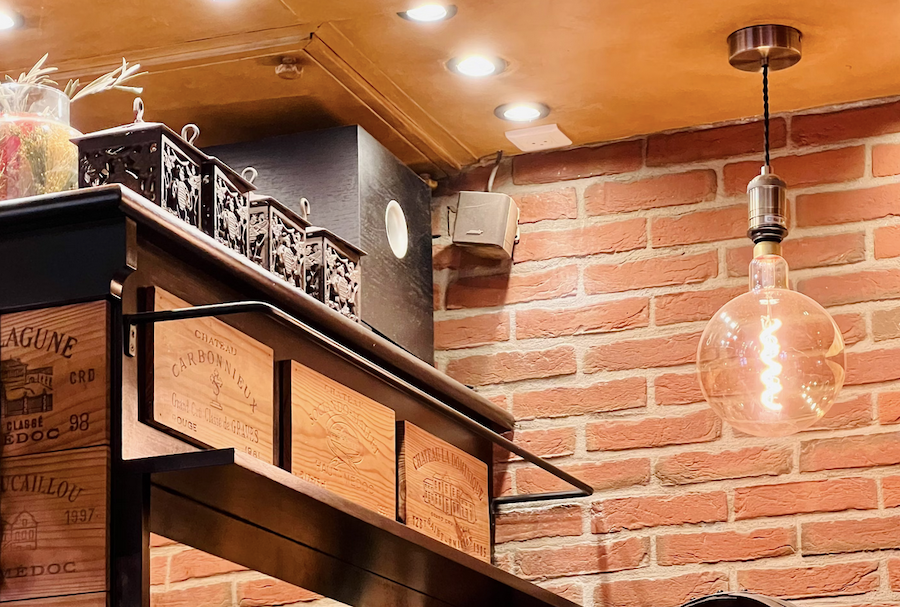Restaurant Energy – Top 10 Energy Saving Tips for Restaurants
Restaurant energy costs in restaurants are consistently high due to the extensive use of lighting, heating, cooling, cooking equipment, and refrigeration.
Reducing energy consumption not only lowers operational costs but also promotes environmental sustainability, aligning the restaurant with eco-conscious customers.
Here are the top 10 effective strategies to achieve energy efficiency in restaurants, enhancing profitability without compromising service quality.
1. Upgrade to energy-efficient appliances
2. Optimize HVAC systems
3. Maximize lighting efficiency
4. Prioritize preventive maintenance for all equipment
5. Implement efficient cooking practices
6. Manage water heating costs
7. Enhance refrigeration efficiency
8. Install energy management systems (EMS)
9. Engage and educate staff in energy conservation
10. Optimize ventilation and kitchen exhaust systems
1. Upgrade to energy-efficient appliances
Energy-efficient appliances are designed to use less power while maintaining or improving functionality.
Equipment certified by programs like ENERGY STAR can save restaurants substantial amounts in the long run.
For example, an ENERGY STAR-rated refrigerator can save 15-20% more energy than a standard model.
While these appliances have an upfront cost, the investment pays off in long-term savings and a reduced carbon footprint.
Choosing energy-efficient options for frequently used equipment such as ovens, refrigerators, and dishwashers can make an immediate impact.
Practical steps:
– Replace old appliances with energy-efficient models gradually to manage costs.
– Monitor energy use and track monthly savings after each upgrade.
– Consider leasing energy-efficient equipment to save on upfront costs.
2. Optimize HVAC systems
Heating, ventilation, and air conditioning (HVAC) systems often consume the most energy in restaurants.
Ensuring these systems operate efficiently is crucial for energy savings and maintaining customer comfort.
Simple practices like setting programmable thermostats, keeping doors and windows sealed, and using ceiling fans can help optimise the HVAC system’s efficiency.
Practical steps:
– Schedule regular maintenance, such as filter cleaning and part inspections.
– Use programmable thermostats to automatically adjust temperatures based on the time of day.
– Seal any cracks in doors and windows to prevent drafts and energy loss.
3. Maximize lighting efficiency
Lighting accounts for a significant portion of a restaurant’s energy use, especially in larger spaces.
Switching to LED bulbs, which use 75% less energy and last 25 times longer than incandescent bulbs, is an easy win for energy efficiency.
Motion sensors in low-traffic areas like storage rooms and restrooms can also reduce waste.
Practical steps:
– Install dimmer switches to adjust lighting based on natural light levels.
– Use occupancy sensors for storage areas and restrooms.
– Utilise task lighting for specific areas instead of lighting the entire space.
4. Prioritize preventive maintenance for all equipment
Preventive maintenance is often overlooked but plays a key role in energy efficiency.
Regular inspections, cleaning, and minor repairs prevent equipment from working harder than necessary, reducing energy consumption.
For example, cleaning the condenser coils on refrigerators can help them run more efficiently, saving up to 15% on electricity for these units alone.
Practical steps:
– Create a maintenance schedule for all major appliances.
– Train staff to spot and report early signs of wear or malfunction.
– Work with trusted service providers to ensure quality repairs and upkeep.
5. Implement efficient cooking practices
A few small changes in cooking methods can yield big energy savings.
Efficient cooking practices—such as using lids on pots, matching pot sizes to burners, and using timers – help reduce cooking time and energy use.
Due to their design, convection ovens, for example, can cook food faster at lower temperatures, saving both energy and time.
Practical steps:
– Preheat ovens only when necessary and switch off during idle times.
– Encourage batch cooking to minimise oven or stove use.
– Use high-quality pots and pans that retain heat effectively.
6. Manage water heating costs
Water heating can account for a large portion of a restaurant’s utility bills, so small adjustments here can yield substantial savings.
Lowering the water temperature by a few degrees can help save on energy without affecting sanitation standards.
Installing low-flow pre-rinse spray valves and faucets can also significantly reduce the energy required for heating water, particularly in high-use areas.
Practical steps:
– Set water heaters to 120°F, which is sufficient for most sanitation needs.
– Use low-flow fixtures to reduce water use.
– Insulate water heater tanks to prevent heat loss.
7. Enhance refrigeration efficiency
Refrigeration is essential but also highly energy intensive.
Ensuring that doors are tightly sealed and defrosting units regularly can help refrigeration systems run more efficiently.
Additionally, keeping units organised and storing items at the right temperature allows for better air circulation, reducing the burden on the cooling system.
Practical steps:
– Perform regular checks to ensure door seals are tight.
– Use night curtains for open refrigeration cases.
– Don’t overfill refrigeration units; ensure good airflow around items.
8. Install energy management systems (EMS)
Energy management systems offer restaurants real-time monitoring and control of energy use.
These systems track and analyse energy consumption patterns, allowing managers to identify and address inefficiencies.
By automating energy use in areas like lighting, HVAC, and refrigeration, EMS solutions help optimise energy usage during off-peak hours or in low-traffic areas.
Practical steps:
– Use EMS data to set energy-saving goals and track progress.
– Automate HVAC and lighting based on peak and off-peak times.
– Consider cloud-based EMS options that can be monitored remotely.
9. Engage and educate staff in energy conservation
Staff engagement is critical to any energy-saving initiative.
Employees who understand the importance of energy conservation are more likely to adopt energy-efficient practices, like turning off lights and equipment when not in use.
Regular training sessions and visible reminders encourage a culture of energy consciousness, fostering daily habits that lead to substantial savings.
Practical steps:
– Hold quarterly training sessions focused on energy-saving practices.
– Use signs and reminders to encourage energy-conscious behaviours.
– Offer incentives for employees who contribute to energy-saving goals.
10. Optimize ventilation and kitchen exhaust systems
Ventilation and kitchen exhaust systems are essential in removing smoke, odors, and heat, but they can be energy intensive.
Variable-speed hoods adjust their speed based on cooking activity, reducing energy use during low-demand periods.
Maintaining a clean ventilation system also improves restaurant energy efficiency, as a well-maintained system doesn’t have to work as hard to achieve desired results.
Practical steps:
– Install variable-speed hood fans that adjust based on kitchen activity.
– Clean filters and ductwork regularly for optimal airflow.
– Set fans to operate at lower speeds during off-peak hours.
Additional considerations for sustainability and cost savings
Beyond these core tips, restaurants can adopt sustainability practices to enhance savings and align with eco-conscious values. Some additional ideas include:
1. Reduce food waste: By closely monitoring inventory and implementing a “first in, first out” policy, restaurants can reduce waste and save on disposal costs. Food waste is not only a financial burden but also increases energy consumption due to the additional resources needed for waste processing.
2. Encourage sustainable sourcing: Energy consumption doesn’t end at the restaurant’s door. Sourcing food locally reduces the carbon footprint associated with long-distance transportation and supports community growers, creating an added environmental benefit.
3. Leverage renewable energy sources: Where feasible, installing solar panels or other renewable energy sources can provide significant savings. Many regions also offer incentives for businesses that incorporate green energy, further offsetting installation costs.
Summing up
Adopting restaurant energy-efficient practices requires a combination of the right equipment, regular maintenance, and an engaged team.
These 10 strategies offer actionable steps that not only reduce costs but also demonstrate a commitment to sustainability – values that resonate with today’s consumers.
By implementing these restaurant energy practices, restaurants can maintain high service standards, reduce their environmental impact, and achieve significant financial savings.
With the growing focus on environmental responsibility and rising energy costs, taking steps toward energy efficiency is an investment that benefits both the business and the planet.













